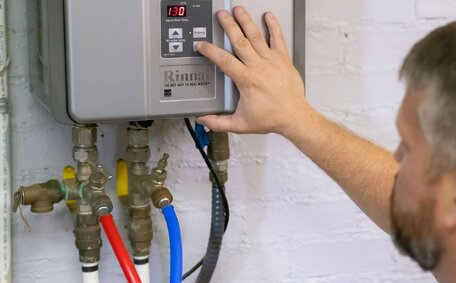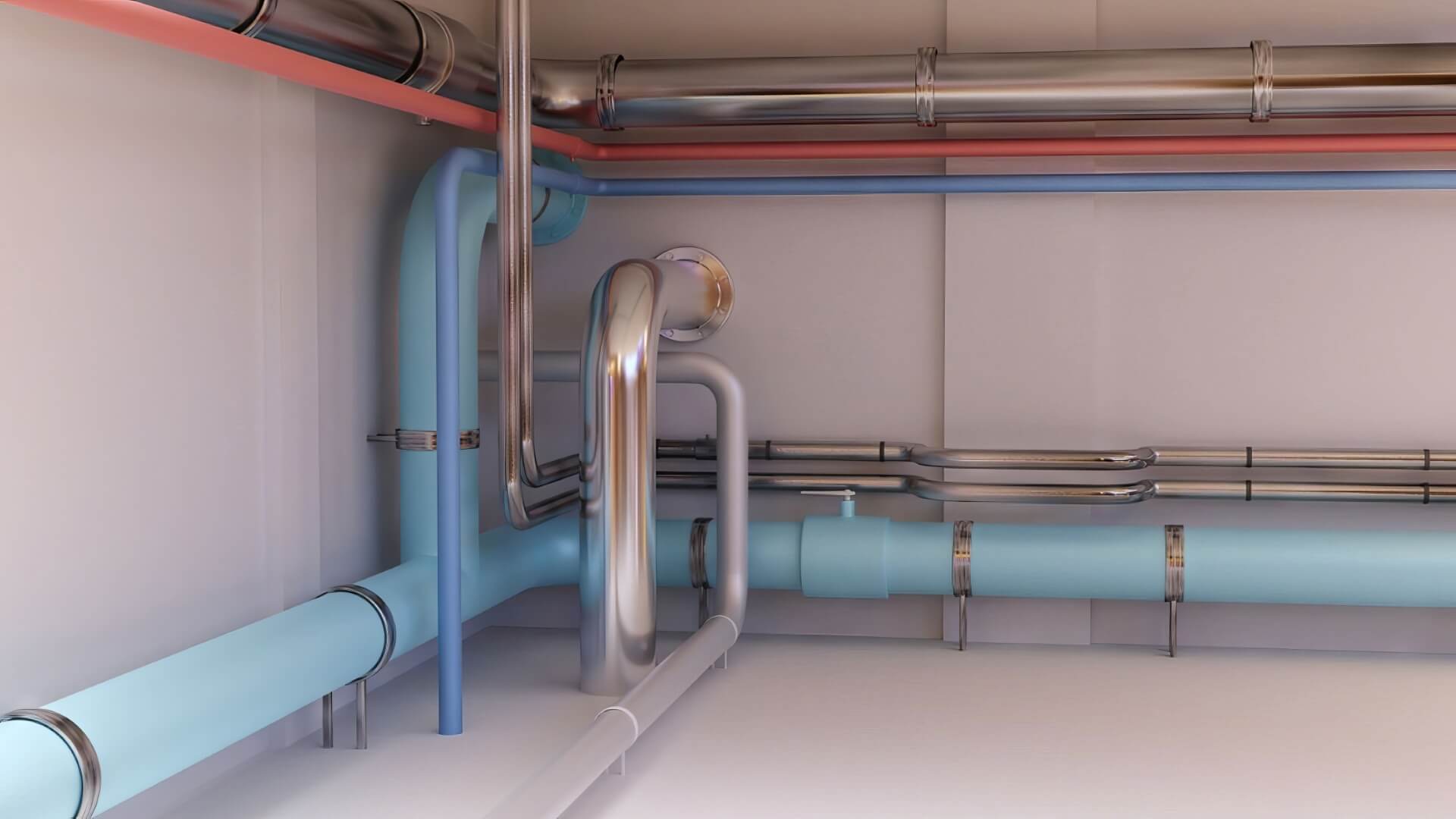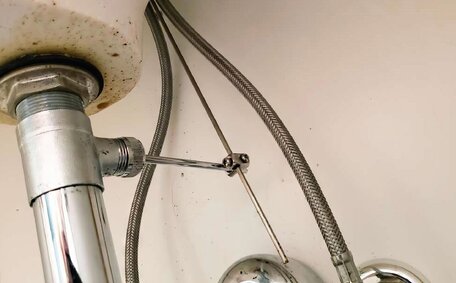Safety Precautions When Cleaning a Gas Stove
Adhering to safety precautions is imperative when cleaning a gas stove.
The most critical step in how clean gas stove is to ensure the stove and burners are completely cool before starting. Make sure to switch the gas valve to 'off’ and allow the stove to cool off completely before you begin. This is a crucial step for the safe cleaning of gas stove components.
Similarly, it’s crucial to safely turn off electric coil burners at the main power source to ensure no current flows during cleaning. This eliminates the chance of gas leakage or ignition while cleaning solutions are applied. Wearing gloves is recommended to prevent hand irritation, similar to when you clean an electric stove oven door.
Avoid flammable agents such as ammonia or bleach when cleaning your gas stove top, especially if the surface is warm.
Only commence cleaning the stove top once it’s cool to prevent the risk of toxic fumes. Ensure there is sufficient airflow during your stove cleaning routine. A damp cloth should be used to avoid direct contact with the stovetop and to prevent burns.
Consult the owner’s manual for advice specific to maintaining the appliances in your home. But in general, allowing the stove to cool fully, turning off gas supply, avoiding flammable cleaners, and wearing gloves are key safety steps when cleaning a gas stove.
Preparing Your Stove for Cleaning
Start the cleaning process by clearing the cookware to reveal the cooktop surface.
Use a sponge to gently remove loose crumbs and food particles from the stove top. This helps get rid of surface residue before cleaning solutions are applied. It’s crucial that control knobs on stove tops are turned off completely for safety.
Consult the manufacturer’s guide for advice on cleaning components like grates and caps. Be cautious when handling hot grates burner caps to prevent injury. Soak the parts in hot soapy water in the sink to loosen baked-on grease.
A paste made of water and baking soda can effectively clean sealed burner surfaces once the heads are gently lifted. Immerse both the burner heads and caps in sudsy hot water for soaking. Use a pipe cleaner or paper clip to gently clear clogged burner holes, and don’t forget to wipe burner heads clean.
The initial step in cleaning your gas stove is to remove all detachable parts for a soapy water soak to loosen stubborn grime. A careful wipe down of your clean burners and the cooktop lays the groundwork for applying cleaning solutions. Pre-treating the burners and gas hob’s surface prepares it for thorough scrubbing.
Removing the Stove Parts
When cleaning a gas stove, it’s important to properly remove the various parts to simplify the cleaning process. Always refer to the owner’s manual for full instructions to pick up hints on removing grates, drip pans, burner caps, knobs and other components.
Handle hot grates and parts with caution; let them cool before removing. Carefully elevate the pan supports, including burner heads caps, away from the stove surface for a thorough cleanse.
Put them, your grates stove, into the sink and soak in warm, soapy water to remove baked-on residue.
Identify the screws or latches securing the drip pans in place. Carefully detach and set aside. Avoid bending or warping the pans when removing them.
Inspect burner caps to understand how you can clean them, checking for securing clips or screws. Arrange caps neatly to avoid mixing them up.
Gently pry caps straight up to remove. Soak caps in warm soapy water for a few minutes then wash away any residue.
Turn the stove burner knobs to the 'off’ position, then carefully extract them by pulling straight out. This practice averts harm to the gas stove burners’ valves, ensuring their longevity and performance. Set knobs aside and keep organised.
Cleaning the Burners and Caps
Ensuring a clean gas burner and its caps is crucial for maintaining an adequate gas flow and an even flame. Start by soaking your burners’ caps and heads in warm, soapy water for 15-20 minutes to loosen any baked-on grease or food residue.
For the how clean gas burner issue, use a soft bristle brush, pipe cleaner or cotton swab to gently clean the burner and the small gas ports in the burner heads. Take care not to bend or damage the ports. Rinse the parts your burner head contains well to remove any remaining soap residue.
For stubborn blemishes, let a baking soda mixture sit for 20 minutes as it sits atop the burner caps. Apply it to eradicate bits food and let sit for 10 minutes before scrubbing with a non-abrasive sponge or soft toothbrush. Rinse clean.
Dry all components thoroughly, ideally with a damp microfiber cloth for ultimate cleanliness, before reassembling them. Check your owner’s manual for proper reassembly. Frequent attention and care make cleaning your gas stovetop a straightforward task, promoting safe and effective operation.
Scrubbing the Grates
Combat grease grime effectively by scrubbing the cast iron grates to remove accumulated deposits, including food remains. Create a non-toxic cleaning solution by mixing 1 cup vinegar, 1/4 cup baking soda, and 1 tablespoon of dish soap into 2 cups of dish soap warm water. Put the grates in the sink and let them soak in this solution for 15-20 minutes.
Employ a non-abrasive sponge or soft-bristled brush to scrub the grates burners clean. Avoid using abrasive scouring pads or steel wool as these can also clean but may damage and scratch the grates over time. Apply moderate pressure as you scrub to lift off builtup grease.
Discover new ways clean tough stains off your gas stove top, such as employing a paste of baking soda and water. Let it sit on the stains for 5-10 minutes before scrubbing. Rinse the grates thoroughly with clean water and dry with a lint-free cloth or let air dry.
Assessing how often should you clear away grime aids in maintaining the pristine condition of your range and deters grease fires. Aim to scrub the grates at least monthly for cleanliness and performance.
Cleaning the Drip Pans
Cleaning the drip pans helps keep your gas stove operating safely and efficiently. Start by removing the drip pans and soaking them in warm, soapy water for 10-15 minutes then scrub away any residue. This softens any burnt-on grime to clean gas burners effectively.
For enamel or porcelain drip pans, use a soft sponge or non-abrasive brush to gently scrub away residue. Avoid harsh scouring pads. Rinse and dry thoroughly.
For heavier residue, mix in some dishwashing liquid with baking soda and water to enhance the cleaning properties. Let sit for 5 minutes before scrubbing. Always remember you can also use the manufacturer instructions for cleaning drip pans to avoid any unintended damage.
Once drip pans are cleaned and dried, securely replace them in the stove. Wipe up any spills during cooking to maintain cleanliness and prepare for deep cleaning when necessary. Deep clean drip pans monthly to ensure optimal flame performance.
Cleaning the Knobs and Control Panels
Cleaning the knobs and burner controls of your gas stove requires special care. Exercise caution to ensure there no water infiltrates the internal mechanics behind the knobs and controls.
Begin by dusting the knobs and control panel surfaces with a clean, damp microfiber cloth. For a deeper clean, use a sponge with a mild detergent and water to wipe off debris. Utilise a damp cloth to ensure you don’t drench knobs and control panels as you wipe away debris.
Take care not to allow any water to drip or seep behind the knobs or into crevices around control switches. Use a dry microfiber cloth to buff and completely dry all surfaces after cleaning.
Never use abrasive cleaners, scouring pads, or stiff brushes on knobs or control panels as these can cause scratches or damage. As she says, consult your owner’s manual for any additional care instructions related to cleaning controls.
With the proper gentle cleaning method, you can safely clean knobs and control panels without harming internal components. This keeps controls looking their best and functioning properly.
Cleaning the Stovetop Surface
Cleaning the stovetop surface of a gas stove requires using the right cleaning solutions for the material. Apply the cleaner, then wipe along the grain to prevent scratches.
For stainless steel stovetops, opt for a dedicated stainless steel cleaner or wipes.
Use a non-abrasive stovetop cleaning cream for glass or ceramic cooktops to avoid scratches. Use a non-abrasive stovetop cleaning cream for glass or ceramic cooktops to avoid scratches.
Rinse and dry thoroughly.
Check your owner’s manual for any special care instructions for your stovetop material. For enamel or porcelain, gently clean with a soft sponge and mild dish soap, steering clear of harsh chemicals. Rinse and dry well after cleaning.
Clean your steel gas stovetop regularly to maintain a new look and remove grease splatters which can be a fire hazard. Aim to clean the surface at least once a month or whenever significant splattering occurs.
Cleaning the stovetop surface of a gas stove requires using the right cleaning solutions for the material.
Rinse and dry thoroughly.
For enamel or porcelain, gently clean with a soft sponge and mild dish soap, steering clear of dic vinegar and alkaline baking soda helps lift grease and grime.
To create the cleaning solution, combine 1/4 cup baking soda with 1 cup warm water and a splash of vinegar and lemon for a powerful, natural cleanser. Mix in 1/4 cup of white vinegar with the water, stirring to combine. Add 2-3 drops of dish soap for enhanced cleaning power.
For a fragrant and invigorating clean, mix white vinegar lemon into your baking soda water solution and apply it with a soapy sponge to the grates. Allow the mixture to sit for a brief duration, then proceed to scrub away any residues. Rinse thoroughly and dry all parts.
The baking soda cuts through grease while the vinegar disinfects. Together they break down tough burnt-on stains safely and naturally without harsh chemicals. Use this mixture monthly to maintain your gas stove’s cleanliness and performance.
Removing Stubborn Stains and Grime
After letting it sit, use a non-abrasive plastic scraper or the back of a spoon to gently lift off the paste. Take care not to scratch surfaces.
For tough stains in grooves or crevices, dip an old toothbrush in baking soda and gently scrub. Rinse thoroughly with clean water and dry the area.
You can also make a paste with 2 parts baking soda and 1 part dish soap. This adds extra cleaning power for stubborn grease and grime. Let it sit then wipe clean with a damp sponge.
For substantial buildup, multiple applications and extended sitting times may be necessary. However, avoid scrubbing too vigorously to prevent damage to stove surfaces. The baking soda paste offers a gentle way to tackle tough grime and stains.
After letting it sit, use a non-abrasive plastic scraper or the back of a spoon to gently lift off the paste.
This adds extra cleaning power for stubborngas stove properly after cleaning requires care and attention. Always refer to your owner’s manual for full reassembly instructions specific to your e right burner heads. Take care not to bend or warp parts when positioning them.
Carefully place the grates back into position after they’ve been eir brackets securely.
Confirm that all parts are fitted correctly before turning the gas supply back on. After cleaning, verify the functionality of the ignition port and adjust flame levels accordingly. If any part is damaged or you’re uncertain of proper reassembly, contact a professional service technician.
With all components thoroughly cleaned and reattached properly, your gas stove will be ready to operate safely and efficiently.






